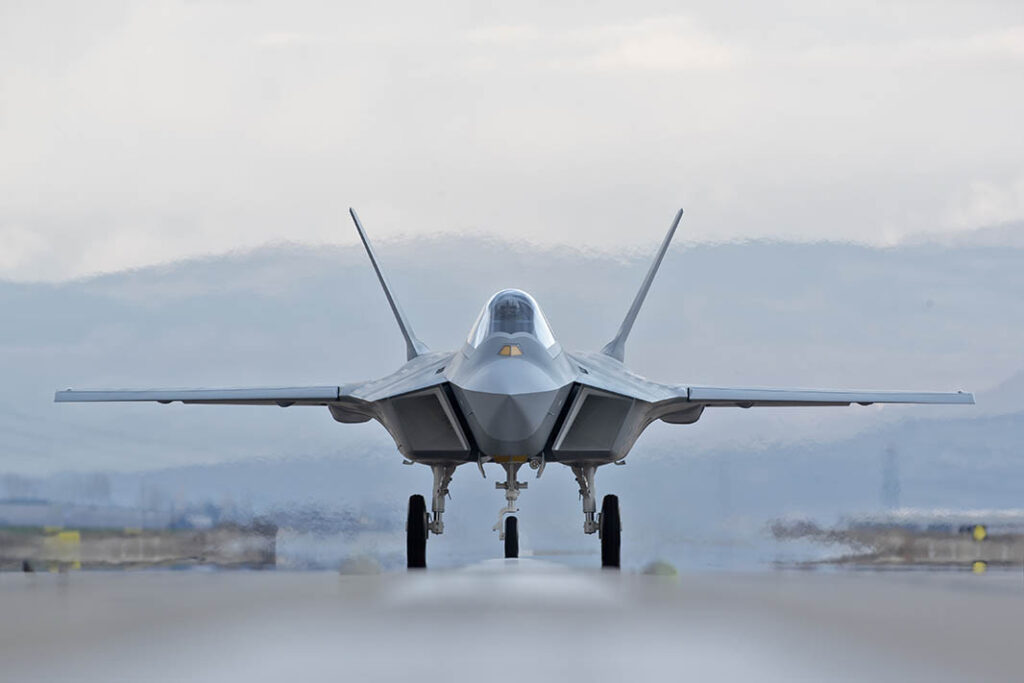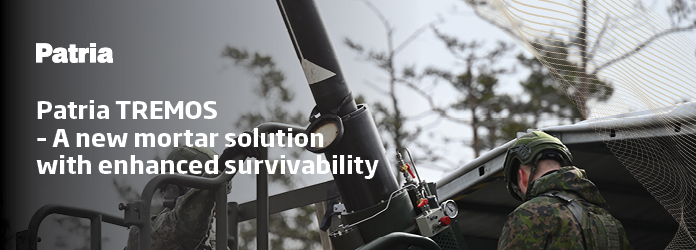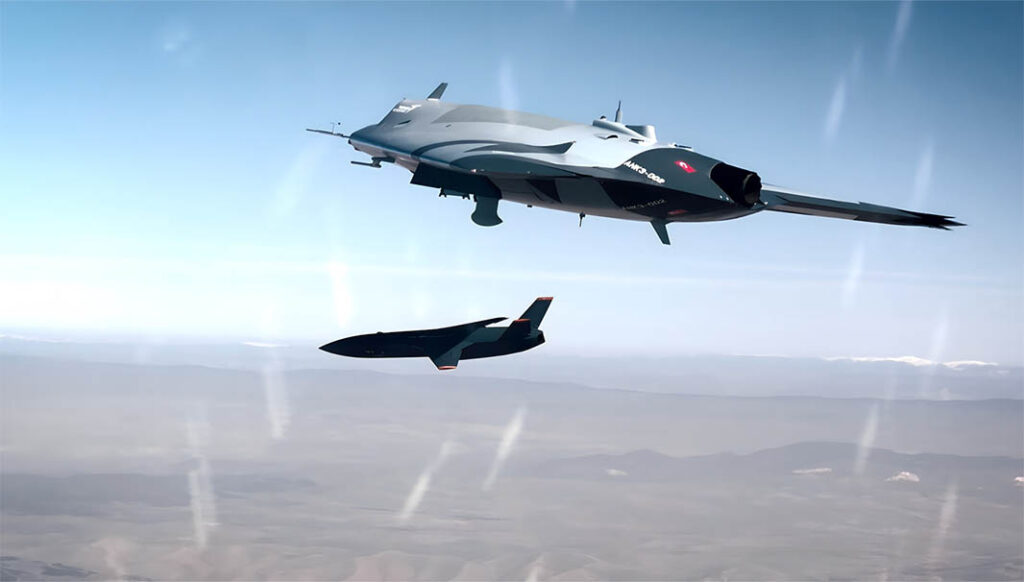Türkiye’s indigenous 5th-Gen stealth fighter, Kaan, built by Turkish Aerospace Industries (TAI, also known as Tusaş), is entering a new phase of development. New prototypes are under construction and the aircraft’s future is looking increasingly bright, underpinned by growing international interest and a national determination to ensure the programme flies high, despite geopolitical tensions.

This article looks at the Kaan programme’s latest milestones, some of its technological developments, as well as the growing list of interested parties, participating nations, and collaborators, which, together with Türkiye, seem set to make Kaan, the ‘king of kings’ (one of Kaan’s translations), a major success, despite the latest rumblings that Türkiye may rejoin the F-35 programme.
Kaan vision unfolds
Kaan has reached its prototype stage, with prototype one, P0, already flying. Yet to get to this point, where Türkiye is now one of just four nations in the world capable of producing a 5th-Gen fighter aircraft, has been a challenge. Though not referred to officially as Kaan until May 2023, the aircraft has also been known and is often still referred to as the TF-X – TF for Turkish fighter – as well as the National Combat Aircraft/Milli Muharip Uçak, or MMU.
The decision to develop a next-generation fighter to replace the nation’s fleets of F-16s and ageing F-4E Phantoms, was first taken at the end of 2010, (long before the US took the decision to exclude Türkiye from the F-35 programme in 2019 due to the Turkish acquisition of Russia’s S-400 air-defence system). In the years following programme launch, TAI conducted concept phase design, development and cost studies along with its GE JV engine arm, Tusaş Engine Industries (TEI – a JV between TAI 50.5%, GE 46.25%, and the Turkish Armed Forces Foundation and Turkish Aeronautical Association), with a report produced for the government a few years later pointing the way forward regarding which design for the plane should be pursued. Among all considerations, from avionics, to electronics and stealth characteristics, it was the choice of engine, which was a major factor defining the overall airframe itself and, for which, single and twin-engine possibilities were on the table. At the start of 2015, a twin-engine design was decided on along the lines of Lockheed-Martin’s F-22 Raptor and announced by the government as the configuration to power Türkiye’s new fighter. Then, in Q3 2016, the programme officially got underway, with the then-Presidency of Defence Industries (SSM; now Defence Industry Agency: SSB), awarding TAI a USD 1.8 billion contract for the design and development of the aircraft.
Engine developments
As to exactly who would develop what engine for the twin-engine plane was still to be determined; various options and participants were consulted, engaged and considered, over several years, with players such as Rolls-Royce forging a turbulent JV relationship with Türkiye’s Kale Group to form the Turkish Air Engine Company (TAEC), and TRMotor Power Systems Industry being formed just for addressing Kaan, in 2017 – just some of several players vying to come up with a suitable product. One requirement alone that would have major bearing on engine choice, was that Kaan needed to be capable of supercruise (sustained supersonic flight without the use of an afterburner), rather than just a short-duration supersonic bursts.

Fast forward to the present and at this time, twin General Electric F110 turbofan engines supplied by General Electric through their TEI JV, currently power the first prototype and will be used on subsequent prototypes. Likely, they will also power initial production airframes, with each in afterburner mode capable of delivering 13,379 kgf (29,495 lbf) of thrust. However, with Ankara’s desire for a fully domestic Kaan and uncertainties as to future security of supply for the F110, which remain under US export control, it seems that TEI is moving forward with a fully indigenous solution for Kaan engine development. The company has been working on and produced an upgrade of its TEI-TF6000 turbofan – the TEI-TF10000 – which it states has played a “critical role on the path to meeting the needs of both Türkiye and the technological achievements for the engine of the indigenous Turkish Fighter – Kaan programme”; same time, it may potentially be suited to power “many other manned and unmanned aviation platforms” in the future, according to TEI. The company highlighted the TF10000 project as crucial in advancing its understanding and development of afterburning turbofan engine technologies – key capabilities essential for the Kaan fighter jet.
However, in partnership with TRMotor, (mentioned earlier and whose shares were fully acquired by TAI in 2021), TEI recently revealed in May 2025, the new TF35000 turbofan engine, which it says is “being developed” not only to power Kaan, but also to support Türkiye’s strategy to eliminate foreign dependence within the defence industry and bolster the country’s international standing in aviation. This new engine will deliver the fighter with 15,876 kgf (35,000 lbf) of thrust, which puts it on a par with the F-22 Raptor’s Pratt & Whitney F119 engine capabilities, and even exceeds others such as the Eurofighter Typhoon EJ200 engine, which delivers just 11,793 kgf (26,000 lbf). TEI said that the engine programme was being conducted under the ‘auspices of the Presidency of Defence Industries for a national military turbofan engine’ and calls it one of Türkiye’s most significant breakthroughs in aviation engines. Its maximum thrust capabilities are intended to meet the needs of 5th-Gen fighter aircraft and its use of high-temperature-resistant super alloys, advanced coatings and cooling technologies enhance the engine’s performance. Even with its high-thrust capabilities, TEI says the indigenous TF35000 will have low fuel consumption and extended range capabilities. To support the engine’s design, development, production, and testing phases, TEI says that ‘an ecosystem’, presumably of domestic aviation SMEs and specialist suppliers, is being established for the TF35000 programme. The Turks currently hope to transition to the new indigenous engine by 2032.
Kaan flies!
In the meantime, and following the completion of production, assembly, and ground testing activities, which, amongst other things, ensured the optimisation of the fighter’s aerodynamic geometry, GE’s F110 engines have enabled the first Kaan prototype, P0, to get off the ground.

Its maiden flight took place on 21 February 2024, from a runway packed with the whole TAI team working on Kaan. In the air for just 13 minutes on a carefully executed test flight, the plane, with landing gear down the whole time, was taken gently to an altitude of just 2,438 m (8,000 ft) and flown to a speed of 426 km/h (230 kn), before landing with the deployment of a drogue braking parachute and to rapturous applause from the programme team. Just over two months later, P0 made its second test flight, again with the pilot taking the plane to the test’s reserved maximum speed of 426 km/h, but this time to an altitude of 3,048 m (10,000 ft), with the whole excursion lasting just 14 minutes.
Kaan has a wingspan of 13.4 m, is 20.3 m long, and stands 5 m high. Its wing area is 71.6 m² and its maximum take-off weight (MTOW) is 34,750 kg. At this time, with its two F110 engines, each delivering 13,379 kgf of thrust. Kaan should be able to achieve speeds up to Mach 1.8 at 12,192 m (40,000 ft), though has a service ceiling of 16,764 (55,000 ft); the airframe is designed to absorb positive and negative g limits of +9g to -3.5g, respectively.
The aircraft’s cockpit, has been designed to minimise pilot workload, with physical, cognitive, and environmental aspects factored and designed into its environment in order to maximise the pilot’s situational awareness, yet reduce their workload; hence, sensor fusion is supported by artificial intelligence (AI) to make this happen. This support to the pilot is crucial if the aircraft’s fullest capabilities are to be achieved, such as extended-range air-to-air combat, and precision strikes, with weaponry sometimes released from the internal weapons bay and at high and supersonic speeds. It is worth noting that Kaan is able to carry up to 10 tonnes of munitions, which surpasses the 6-tonne payload, of the F-35. Kaan will also use MURAD 600-A active electronically scanned array (AESA) radar, which has increased capabilities over the MURAD 100-A AESA on Turkish F-16s.
Beyond its flight tests, aimed at proving the plane could fly and be manufactured, Kaan’s P0 prototype ground-tests achieved a milestone in early December 2024, when engineers activated both engines’ afterburners and tested them successfully, injecting additional fuel into the F110s’ exhaust streams, which ignited to produce a larger, hotter flame, with the resulting desired increase in thrust. TAI’s CEO, Mehmet Demiroğlu, commented at the time that successfully activating an afterburner on a jet engine was not just a technical achievement, but a triumph of discipline and teamwork. The whole process required careful design and control to maintain a stable flame, manage high temperatures, and ensure even burning.


The programme has now entered a new prototype phase, with second, third and fourth prototypes, P1, 2, and 3 reported to be under construction with redesigned air intakes, (critically important in terms of minimising radar reflection from the engine’s blades, without impacting airflow), as well as further structural, internal configuration and weight-distribution changes; a further three prototypes, P4, 5, and 6, will incorporate changes gleaned from the flight test programme of the earlier prototypes, and will precede serial production, according to Demiroğlu speaking at the early-May 2025 Teknofest event in northern Cyprus. He is reported to have said the first of the new prototypes would be completed end-2025, with the second in early 2026, both joining the existing P0 and a ground-based test airframe. What will then follow in 2026, is what has been described as an intense schedule of test flights to be conducted thereafter. A next P0 flight test is provisionally scheduled for October 2025.
First deliveries of Kaan fighters to the Turkish Air Force have been slated for the 2028/2029 timeframe, with TAI, according to reports, expected to deliver 20 aircraft in the initial tranche. At Teknofest, Demiroğlu confirmed the end-2028 timeframe for first deliveries, saying the company was committed to delivering Kaan and “pushing forward, with everything we have, to honour that timeline”.
Overseas interest and collaboration bolsters Kaan
With considerable interest from overseas, success on the export market for Kaan may still depend to a large extent on its domestic uptake with the Turkish Air Force and TAI meeting that 2028 timeline and beyond. In the meantime, however, international interest is looking good. Azerbaijan became the programme’s first development partner in mid-2023 and its interest is not only its role in subsystem manufacture, but also becoming a potential export customer for the aicraft in the future. In February 2025, as reported in the Middle East Monitor, partnering interest was expressed by the UAE during the IDEX event in Abu Dhabi, when TAI’s Demiroğlu said that the Kingdom of Saudi Arabia (KSA) was now listed as an active collaborator on the programme and, following the UAE’s approach and discussions, that they, too, would likely be added next. The KSA’s MoD had actually expressed interest to Türkiye in the purchase of 100 Kaan fighters in January 2025, prior to its February contact. Beyond the Gulf Cooperation Council (GCC) nations, whose interest bodes well for the Kaan programme overall, participation is materialising from Asia and the Indo-Pacific in the form of Indonesia, Kazakhstan, Malaysia and Pakistan.

Talk of Pakistan joining the Kaan programme has been reported for some time, with a Pakistani delegation said to have signed a contract with TAI during the IDEF 2023 trade fair for the domestic manufacture of different parts and subsystems for both Kaan and Turkish unmanned combat aerial vehicles. However, it was in January 2025, at the Pakistani-Turkish Industrial Expo forum, that Pakistan’s participation to develop and build not only subsystems, but Kaan itself, was officially confirmed and that the two nations are set to establish and operate a joint factory in Pakistan to produce the new fighter, in due course. As for Indonesia, it first expressed interest in collaborating on the development of Türkiye’s 5th-Gen fighter jet during a trip by President Recep Tayyip Erdoğan to the country when he met with President Prabowo Subianto in Indonesia in February 2025, interest that was reaffirmed when President Subianto visited Türkiye on a state visit in April 2025 and presented President Erdoğan with a formal proposal to that effect.
Senior SSB officials and TAI executives have been reported as expressing interest in having Malaysia as a collaborative partner in the programme for some time, with TAI in the Malaysian media as having formally offered the Malaysians ‘partner status’ in the project, following Kaan’s second test flight, although no further details are certain. Ukraine, during 2024, also showed interest in participating as well as purchasing the new fighter, though again, further details are uncertain.
Most of these nations see Kaan as a potential cost-effective 5th-Gen fighter option compared with western alternatives, with some reports putting a unit price for Kaan somewhere between USD 80 to USD 110 million. For the likes of Kazakhstan and Malaysia, the need to replace ageing fleets, in the latter’s case, Soviet-era MiG and Sukhoi aircraft, is also behind their interest in the programme.
Geopolitical footnote – really?
Recent reports suggest there’s a thawing of relations between Washington and Ankara over the S-400s, the reason for Türkiye’s exclusion from the F-35 programme when Trump was first in office. Turkish Foreign Minister, Hakan Fidan, is at the centre of discussions between the two capitals to find a resolution, with one idea rumoured to be that of keeping the S-400s stored and non-operational, and Ankara hoping this may appease the White House enough for Washington to remove it from the list of parties restricted by the Countering America’s Adversaries Through Sanctions Act (CAATSA).
One catch: as a stop-gap measure for its air force after the 2019 F-35 exclusion, Ankara set in motion a multi-billion-dollar F-16 modernisation kit and procurement plans with Lockheed Martin, including for 40 F-16 Block 70s, the most advanced version of the 4th-Gen fighter. This agreed deal has not, however, gone ahead, and after improving phone calls between Erdoğan and Trump in recent months, together with Fidan’s efforts, reports in Middle Eastern media suggest a real prospect that Türkiye may be readmitted to the US F-35 5th-Gen fighter programme. In which case, Ankara could possibly redirect deposit funds already paid towards the F-16 deal into the F-35 programme (same vendor, easy accounting), if readmitted. Aspects of the F-16 deal, nevertheless, will continue, it is understood. Considering Ankara already purchased, in full, six F-35s in 2019, (held mothballed in the US until now), it is no wonder they’d like back in, as these could be delivered and enter Turkish Air Force service right away.
How such developments might affect the Kaan programme is anyone’s guess – though probably not at all. Considering Kaan’s progress and international groundswell, it is likely to proceed along its path to bolster Türkiye’s defence ecosystem self-reliance and offer customers around the world a 5th-Gen aircraft. ESD approached the military attaché’s office at the Embassy of Türkiye in London for feedback as to the likelihood of F-35 programme re-entry, but no one was available for comment.

Tim Guest
Author: Tim Guest is a long-time defence and aerospace journalist, UK Correspondent for ESD, and a former officer in the British Armed Forces.



